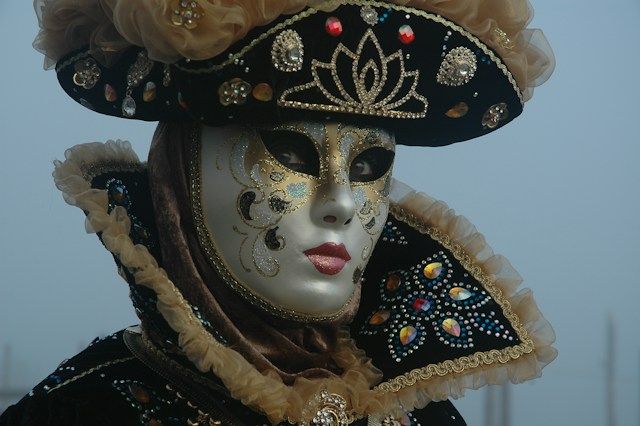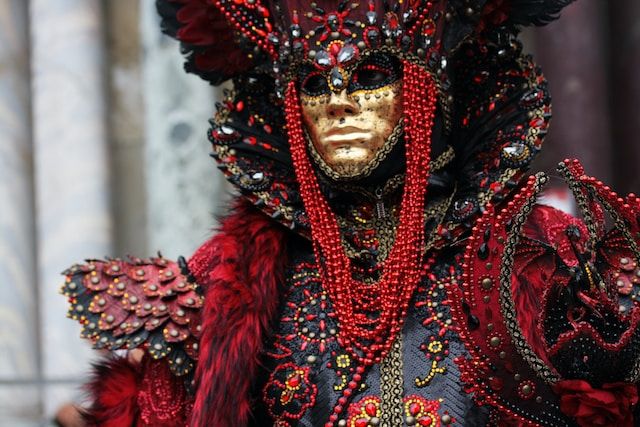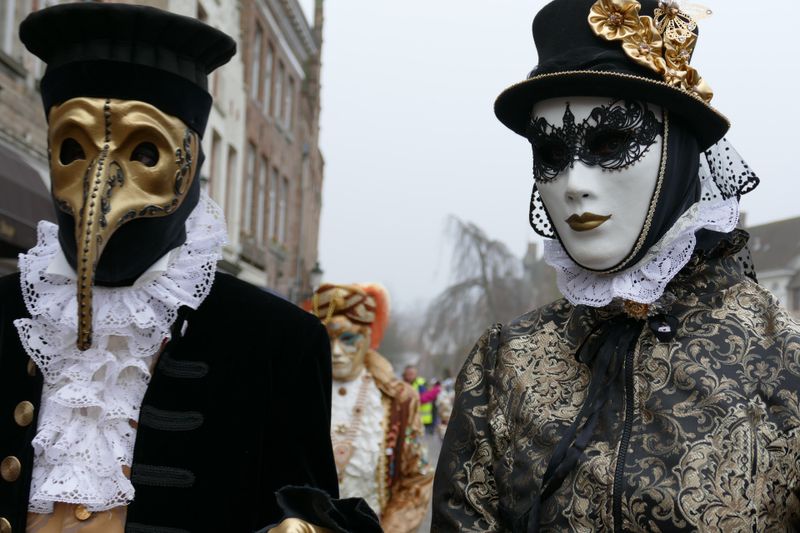Venetian masks, with their thousands of years of history and rich symbolism, represent one of the most fascinating and iconic cultural heritages in the world.
Traditional venetian masks

This article offers an in-depth analysis of their evolution over the centuries, from the ancient Republic of the Serenissima to their revival in contemporary times.
Origins and functions of the masks

The origins of Venetian masks run deep in the history of the Serenissima Republic.
In the past, Venetians wore masks for long periods during the year, mainly for three basic reasons: during the long period of Carnival, as a precaution during risky activities such as gambling or shady dealings, and to enjoy a degree of anonymity that allowed them to evade social and legal restrictions.
These masks represented a way to explore and experiment with alternative identities, temporarily freeing themselves from the constraints of everyday life.
Regulations and prohibitions
However, the use of masks was not without rules and restrictions. Throughout Venetian history, several laws were enacted that prohibited or regulated the use of masks in certain social contexts.
For example, while they were mandatory for women attending the theater, they were forbidden for young women seeking husbands.
These prohibitions reflected the complex social and political dynamics of the time, highlighting the duality of Venetian masks as tools of liberation and social control.
Icons and masked characters
Venetian masks have given rise to a wide range of iconic characters and legendary figures who embody the soul and spirit of the city.
From Giacomo Casanova, the Venetian adventurer and libertine, to the mysterious plague doctor with his trademark mask, these figures have captured people's imaginations through the centuries.
In addition, commedia dell'arte masks such as Pantalone, Harlequin and Columbine have become universal symbols of theater and entertainment.
Revival of tradition
After centuries of decline, the Venetian mask tradition experienced a revival in the 20th century. With the reopening of the mascareri workshops in 1979, the city witnessed a new wave of creativity and innovation in the production of traditional masks and costumes.
Today, these workshops continue to thrive, offering visitors the opportunity to fully immerse themselves in the rich tradition of Venetian masks through creative workshops and guided tours.
Venice masks: witnesses to a rich and complex history
Venetian masks are more than just carnival accessories; they are witnesses to a rich and complex history spanning centuries of culture, art and tradition.
Reliving this tradition not only allows us to appreciate the craftsmanship of Venetian artists, but also connects us with a unique cultural heritage that continues to inspire and fascinate people around the world.
At a time when globalization threatens to homogenize local traditions, Venetian masks remain a powerful symbol of the diversity and cultural richness of Venice and its people.
The significance of venetian masks in contemporary culture
In addition to being an integral part of Venetian history, masks have also assumed a significant role in contemporary culture.
Their presence is evident not only during the Carnival period, but also in cultural events, private parties, and even in the world of entertainment and fashion.
Cultural events and special events
Venetian masks continue to be at the center of major cultural events.
The Venice Carnival, with its lavish processions of masks and elaborate costumes, attracts tourists from all over the world and provides a unique opportunity to immerse oneself in the magic and atmosphere of Venetian tradition.
In addition to Carnival, masks are often featured at other special events such as weddings, gala parties, and theatrical events.
Artistic and creative expression
Venetian masks have inspired generations of artists and designers, becoming an inexhaustible source of inspiration for works of art, theatrical costumes and fashion creations.
Artisans and designers continue to reinterpret and reinvent the shapes and motifs of masks, creating new collections that blend tradition and innovation.
Masks are no longer just objects of entertainment, but true works of art that embody the flair and creativity of their creators.
Cultural tourism and education
Venetian masks also play an important role in promoting cultural tourism and education.
Visitors who come to Venice have the opportunity to discover the history and tradition of masks through museum tours, craft workshops, and theatrical performances.
These experiences offer a unique perspective on Venetian culture and allow visitors to fully immerse themselves in the city's enchanted atmosphere.
Venice mask: Conclusion
Venetian masks represent a valuable cultural treasure that continues to capture the imagination of people of all ages and backgrounds.
Their thousand-year history, rich symbolism and timeless beauty make them a distinctive element of Venetian culture and a heritage of humanity to be preserved and celebrated.
In an increasingly homogenized world, Venetian masks remain a beacon of creativity, tradition and local identity, testifying to the resilience and vitality of the Venetian people over the centuries.

